Fancy a getaway combining fascinating history, Mediterranean landscapes and cultural discoveries? Drive to Malta, an archipelago in the heart of the Mediterranean, seductive for its rich history, crystal-clear waters and warm atmosphere.
In just 3 days, discover the treasures of this little paradise: from the streets steeped in history of Valletta to the idyllic cliffs of Gozo.
In this travel guide, you’ll find an itinerary to guide you step by step through the must-see sites, while also offering a dive into Malta’s captivating history and a selection of addresses to savour the best of the local gastronomy. Get ready for a change of scenery and a wealth of discoveries!
This travel guide was produced following an invitation from Visit Malta and Transavia. The opinions and suggestions for activities mentioned in this article are therefore entirely sincere.
This guide contains affiliate links, which means that I receive a commission if you make a purchase after clicking on one of these links. It doesn’t cost you any more, but it helps me bring you new guides. Thank you! 🙂
Summary
Malta in short
When should you go?
Summer in Malta is very hot. The best seasons to discover this destination are autumn and spring. Winter is also a good time to discover the island’s charms while avoiding the crowds. Don’t hesitate to go between October and March these months are less busy, but the weather is still pleasant.
How do I get there?
It takes just 2.5 hours to get there by plane from France. From Paris-Orly, Transavia flies to Malta all year round, including winter, with two flights a week on Thursdays and Sundays, from €57 one way. From April, there is even up to one flight a day. – Find out more
How long to stay?
There’s a lot to see in Malta, so plan to stay at least 3 days to avoid getting too frustrated. If you can, 5 or 7 days will not be too much to explore all the islands and enjoy the Maltese beaches.
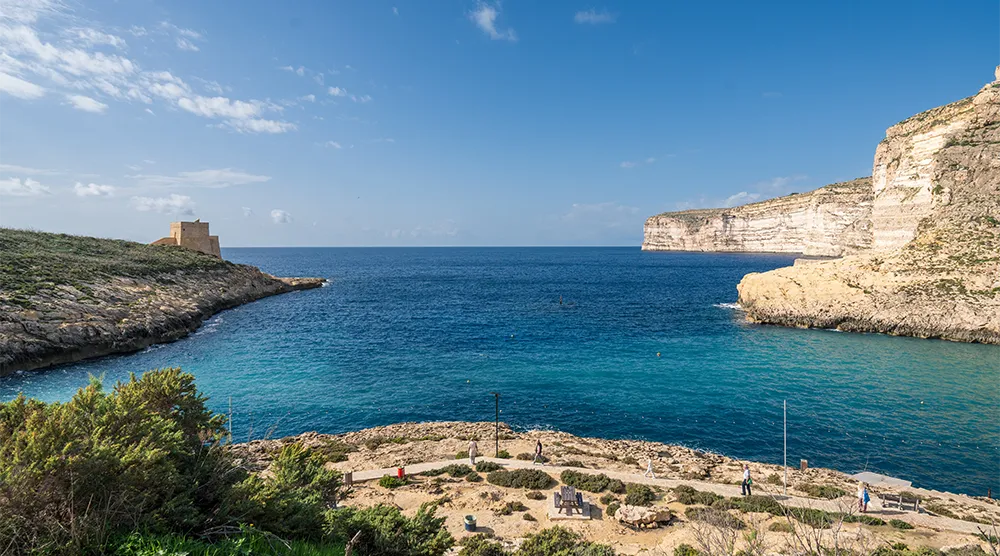
How do you get around?
Spread over just 45 km, Malta is easy to get around. You can, of course, hire a car locally or simply take a taxi. – Book a car in Malta
What language should I use to communicate?
Almost all Maltese speak English, so it’s very easy to communicate if you know a few words of Shakespeare’s language!
Who is it for?
Whether you’re a lover of art and history, a lover of beautiful scenery, a gourmet or a party-goer, there’s bound to be something for you!
How much does it cost?
Malta is a very affordable destination, and if you plan ahead, the return flight will cost you just €120. There is accommodation to suit all budgets. On the restaurant side, prices are similar to those in France / UK.
Understanding Malta
The Republic of Malta is the smallest state in the European Union, covering just 316km2. It has just under 500,000 inhabitants.
Located 93 kilometres south of Sicily, it is an archipelago of 8 islands, only 4 of which are inhabited. The main islands are Malta, Gozo and Comino.

Did you know?
The name ” Malta ” is said to have been given by the Greeks from the ancient Greek μέλι which means ” honey ” and which was Latinised by the Romans into Melita. The name probably comes from the honey that was produced there, but some Maltese see a link with the golden colour of the buildings.
The history of Malta
From prehistory to the Middle Ages
Malta’s history is deeply marked by its strategic position at the heart of the Mediterranean, which has made it a crossroads of civilisations. Inhabited as early as 5000 BC, the archipelago was the scene of one of the first great civilisations, as witnessed by its megalithic temples, which are among the oldest in the world. From the VIIIᵉ century BC onwards, the Phoenicians settled here, followed by the Greeks and Carthaginians, transforming Malta into an important trading post.
After the Roman conquest in 218 BC, the island prospered and became Christianised, particularly after the shipwreck of the apostle Paul in 60 AD. Malta then came under Byzantine rule, followed by the Arabs in 870, who left a lasting influence, particularly on language and agriculture, and made Mdina their capital. From 1090, the Normans integrated Malta into the Kingdom of Sicily, laying the foundations for a return to Christianity.
The Order of Malta
A major turning point came in 1530, when Charles V, King of Spain, offered Malta to the Knights of the Order of St John so that they could regain sovereignty after being driven off the island of Rhodes by the Ottomans. The Order turned Malta into a Christian stronghold against the Ottomans. Their victory during the Great Siege of 1565, which pitted just 9,500 men of the Order against 40,000 Ottoman soldiers, has gone down in history.
Between 1566 and 1571, the Order built a new fortified capital, closer to the sea, named La Valette after Jean Parisot de La Valette, Grand Master of the Knights of the Order. The fortifications were built in just 5 years and the city went on to acquire prestigious monuments such as the Palace of the Grand Masters.

The modern era
In 1798, Napoleon drove out the Order of Malta and briefly took possession of the island, but the Maltese appealed to the British to end the French occupation. In 1814, Malta became a British colony.


During the First World War, Malta was relatively spared the fighting and was home to a hospital. On the other hand, World War II was terrible for the island, which was the target of incessant bombing and a blockade by the Axis forces. The islanders’ heroic resistance was rewarded in 1942 when they were awarded the George Cross, which has featured on the island’s flag ever since.

Independence was achieved in 1964, and Malta became a republic in 1974 while remaining a member of the Commonwealth. Joining the European Union in 2004 and adopting the euro in 2008, Malta is today a modern nation with an exceptional cultural and historical heritage.
Itinerary : what to do in Malta in 3 days ? 10 must-sees
Although the territory of the Republic of Malta is small, there’s a lot to see! Here’s a suggested 3-day itinerary to discover the must-sees:
Day 1 : discovering Gozo
Start your holiday by discovering Gozo, an island of character located 5km north of the island of Malta. Less populated, this island has a rural feel with pretty beaches, old fortifications and breathtaking natural landscapes.
How do I get to Gozo?
The Malta-Gozo crossing takes 30 minutes by ferry and costs less than €5 return. Find timetables, fares and tickets at https://www.gozochannel.com/
Visiting Gozo’s churches
The Republic of Malta is a very religious country : 98% of the population is Catholic. Despite its small size, Malta has 365 churches and religious services are plentiful. Don’t hesitate to push open the doors of these places of worship, some of which are particularly remarkable.
In Gozo, I particularly recommend the church of St John the Baptist, better known as Rotunda, which dominates the south of Gozo with its immense dome rising 74 metres, the third largest in the world and even bigger than that of St Paul’s Cathedral in London !

26 Triq Il-Knisja, Ix-Xewkija
https://www.xewkijaparish.org/
Also worth seeing is the Basilica of Ta’ Pinu, built in 1920 following the visions of a peasant woman and a major pilgrimage site. It was visited by John Paul II and Benedict XVI, who blessed a golden rose.

Shrine, Ta’ Pinu, Road, Għarb
https://www.tapinu.org/
Admire the cliffs of Ta’Ćenć
In southern Gozo, the cliffs of Ta’Ćenć also known as ” cliffs of Sanap “, rise to a height of 130 metres. These majestic limestone rocks are a must-see.

Book a guided tour of Gozo
Walking around the salt marshes
In the north of the island, the salt marshes reveal an unexpected landscape. Flat stretches of limestone have been sculpted into small basins for salt production.
Like everywhere else, salt was very precious before the invention of the refrigerator. The Knights of St John controlled its production and fined those who produced it without authorisation. Nowadays, salt is still harvested but in small quantities and only during the summer.

Exploring the walled city of Victoria
It’s impossible to miss this town that dominates the island ! Formerly called Rabat, it has been known as Victoria since 1897 to mark the Diamond Jubilee of British Queen Victoria.
Don’t miss a visit to the Citadelle, which is accessible free of charge. Its 15th-century ramparts offer a view of the surrounding area, which is particularly magical at sunset.




Visit Gozo by Tuk-Tuk!
To really explore Gozo and see the must-see sites, I recommend a Tuk Tuk tour with a private driver.
All you have to do is let yourself be guided and enjoy your day.
Day 2: off to Malta!
Take the Ferry back to Malta, heading for its capital : Valletta, passing some beautiful viewpoints.
Admire the view from Għajn Tuffieħa Bay
In the north-west of the island, Għajn Tuffieħa Bay is a must-see with breathtaking views out to sea.
You can also see a tower built in the 17thth century to reinforce the coast’s defences.



Sunbathing on a sandy beach
Right next door, Golden Bay is a must-see beach. Although Malta is mainly made up of rocky coves, Golden Bay is a very popular sandy beach where locals and tourists alike love to relax!
Book a guided tour of Malta
Visit MICAS (Malta International Contemporary Arts Space)
In Florina, just outside Valletta, the MICAS is a new contemporary arts centre housed in a former 17th-century military bastion listed as a UNESCO World Heritage Site. Until 27 March 2025, MICAS is presenting an exhibition devoted to the Portuguese artist Joana Vasconcelos.


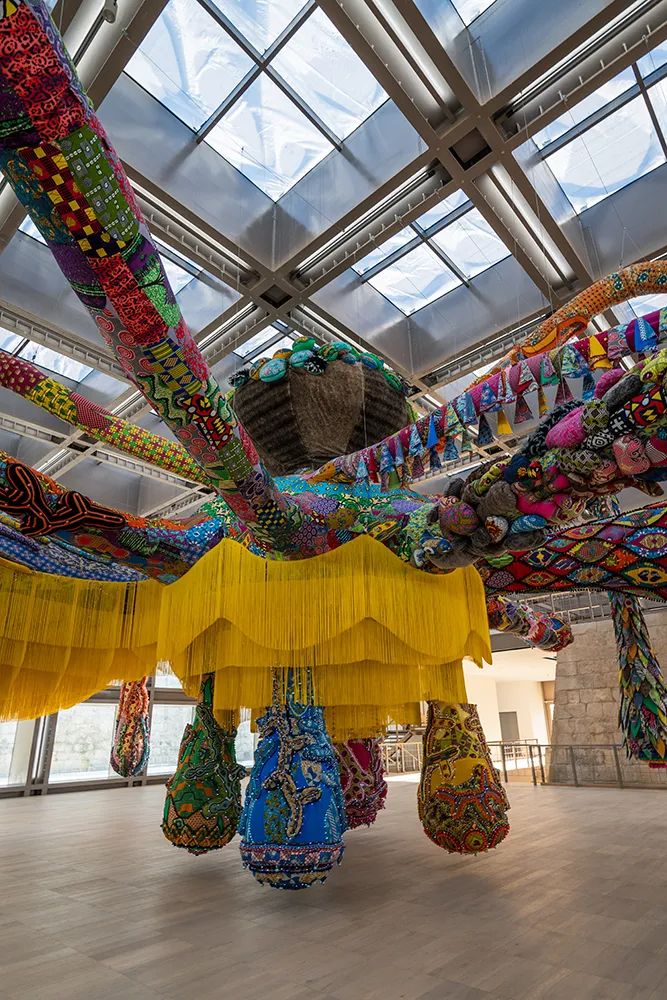
Ospizio Complex, Bieb il-Pulverista, Triq Joseph J Mangion, Floriana FRN1830
https://micas.art/
Adults €10 / Students and senior citizens €7 / Children aged 6-11 €4 / free for under 6s
Tuesdays from 12pm to 6pm
Wednesdays to Sundays from 10am to 6pm
Open evenings on Fridays and Saturdays until 8pm
Closed Mondays
Arrival in Valletta, the capital
Finish the day by heading to Valletta, Malta’s small but magical capital, where you’ll find plenty of bars and restaurants to enjoy at the end of the day.

Day 3 : Valletta, a capital of art and history(s)
Valetta is my favourite part of this stay in Malta : this capital, small in size, has many stories to tell ! Its impressive fortifications were built in just 5 years, between 1566 and 1571, by the Knights of the Order of St John. Inside, the town adopted a grid layout designed to make it easier for troops to move around, but also to cope with the sometimes very strong winds in this coastal town.
Since 1980, Malta’s capital has been listed as a UNESCO World Heritage Site for ” an ideal creation of the late Renaissance, with its regular plan inspired by Neo-Platonic principles, its fortified and bastioned enclosure modelled on the natural site and the deliberate siting of major monuments in choice locations. “.

But don’t think that this historic city lives in the past. On the contrary, it’s a living city that continues to evolve: in the 2010s, the city gates were redesigned by the famous architect Renzo Piano. Today, it’s a city with a lot to offer beautiful gardens, fascinating museums and a cathedral like no other.
Wandering around the city
Valletta is not very big and can easily be discovered on foot. What’s more, with its grid plan it’s hard to get lost ! Take your time wandering its charming streets, poking your head into the churches, pushing open the doors of the shops. In short, let yourself be carried away by the city and its atmosphere.


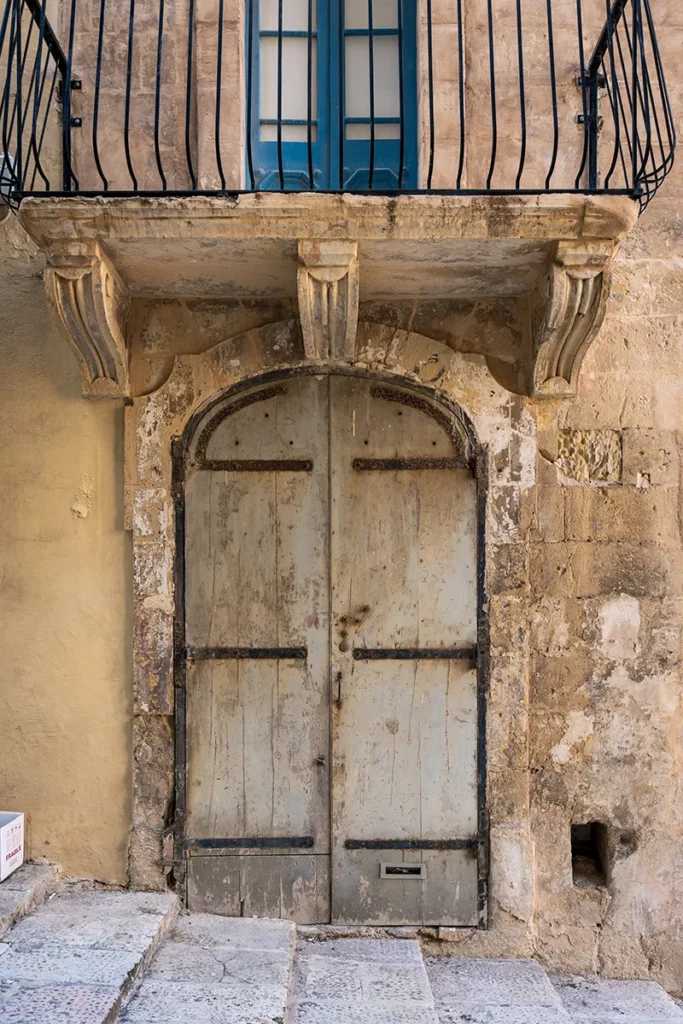
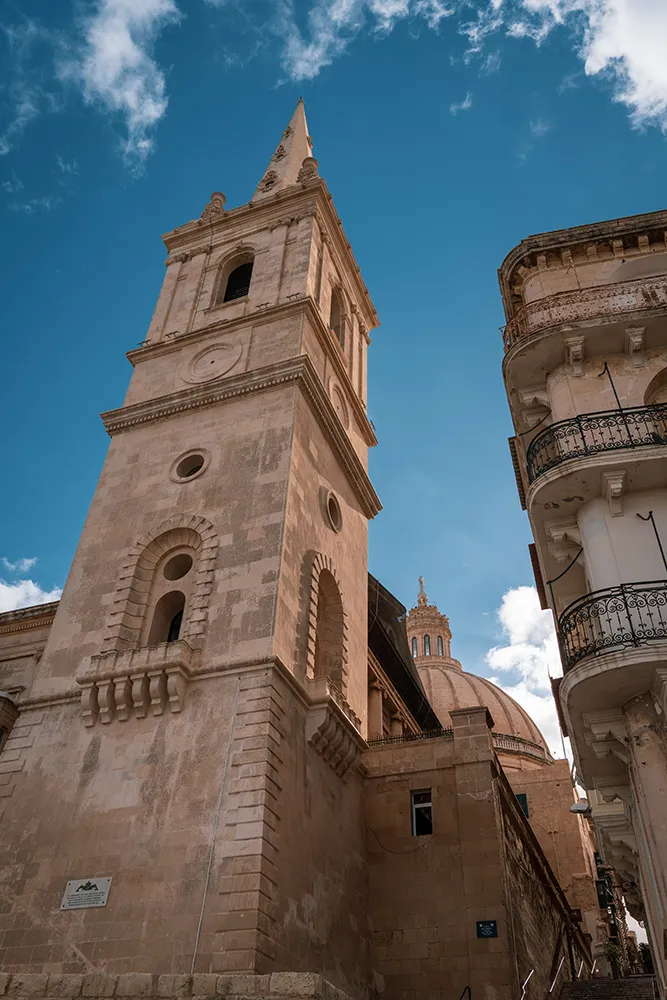
Book a guided walking tour of Valletta
Admiring the co-cathedral
If you only have time for one visit to Valletta, then head for the co-cathedral, a masterpiece of Baroque art.

Why a ” co-cathedral ” ?
This unusual title was conferred by Pius VII in 1816. In fact, Valletta became the capital of Malta in place of Mdina, which already had a cathedral, so this is the island’s second cathedral.
This cathedral is unlike any other; it was financed and commissioned in 1572 by the Grand Master of the Order of St John, Jean de La Cassière, who made it the conventual church for the Order’s knights. The current decoration dates from 1660. We owe it to the great master Raphaël Cotoner, who commissioned the Italian Mattia Preti to create a Baroque-style décor capable of rivalling the churches of Rome.
During your visit, look at your feet : the floor is covered with marble slabs. Below lie the 400 knights of the Order, including the founder of the Maltese capital, Jean Parisot de La Valette.

On the sides, eight chapels echo the languages spoken by the Order and evoke the nationality they represent. The co-cathedral is also home to two paintings by Caravaggio, which are a must-see!
Triq San Gwann, Il-Belt Valletta
https://www.stjohnscocathedral.com/
Monday to Saturday, 9am to 4.45pm
Closed on Sundays and public holidays (reserved for church services).
Visit the Palace of the Grand Masters
Built from 1572, this sumptuous palace was once the residence of the Grand Masters of the Order of St John before housing the Maltese Parliament from the country’s independence until 2015, when the parliament moved to a new building constructed by Renzo Piano.
Today, the palace can be visited. You can see an impressive armoury housed in the former stables, as well as 5 rooms from the state flats, as the palace is still the official residence of the President of Malta.

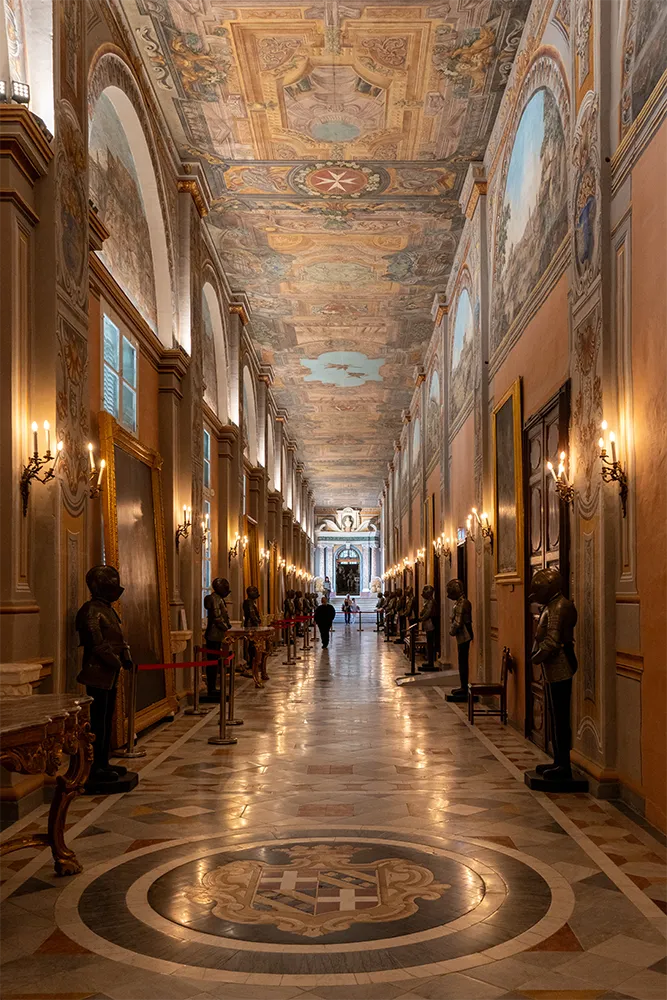

On the walls and ceilings, trompe l’oeil frescoes depict the Order’s great battles.
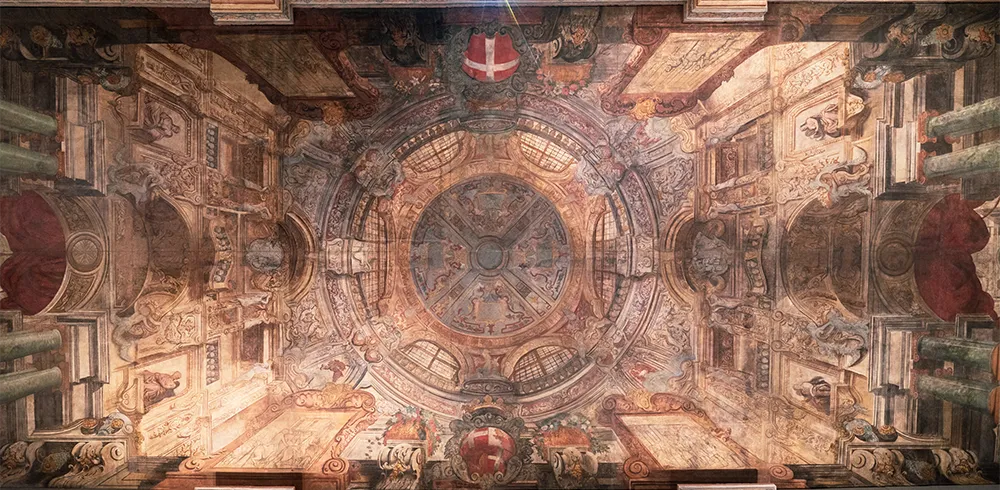
Grand Master’s Palace, Valletta
Adults : 12 € / 12-17 years and over 60 years 10 € / Children 6-11 years 8 € / Free for children under 6
Opening times vary according to the season, consult the official website:
https://heritagemalta.mt/explore/grand-masters-palace/
Book an activity in Valletta
See the fishermen’s quarter
On the lower side of the city, less frequented by tourists, the fishermen’s quarter was nevertheless my favourite. With its colourful houses and small boats, it has retained an authentic feel that makes it so charming.
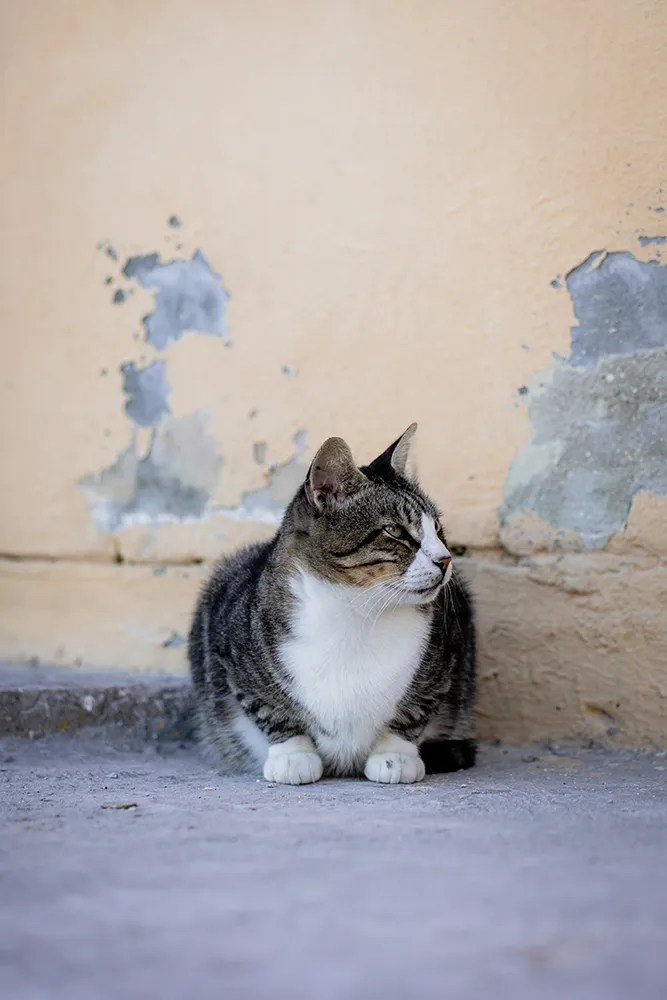

Walk around Upper & Lower Barrakka Garden
These two gardens are the finest in the city and offer two breathtaking views of the sea and the Grand Harbour, the port that was once the maritime base for the Knights of the Order of St John.

During the day, they can be very busy, so I’d recommend going in the early morning or late afternoon to enjoy the peace and quiet. I particularly liked the smaller Lower Barrakka Garden, with its monument in the shape of a Greek temple dedicated to Sir Alexander Ball, a Maltese who rose up against the French during the 1798 uprising.


In 4 days or more
If you have more time, make a detour to Mdina, the ancient capital. You can also stop off at the island of Comino, a little paradise with natural landscapes that will appeal to photographers, hikers and divers alike.
If you like to party and are looking for bars and nightclubs, head for Paceville, which is mainly frequented by students.
Find out more about what to do in Malta on the Visit Malta website:
Good addresses in Malta
Where to stay in Malta?
Enter the dates of your stay below to see available accommodation and prices:
In Gozo, I recommend the Kempinski Hotel Gozo, an island of well-being in the heart of the island. This luxurious establishment offers spacious rooms overlooking the pool. There is also a gym and a restaurant where you can enjoy typical dishes and local wines.



On the island of Malta, near Valletta, the Cugo Macina Senglea Hotel will allow you to be totally immersed with its rooms created in the very heart of the fortification enclosure. The hotel also boasts a swimming pool and a rooftop with breathtaking views of the surrounding area.



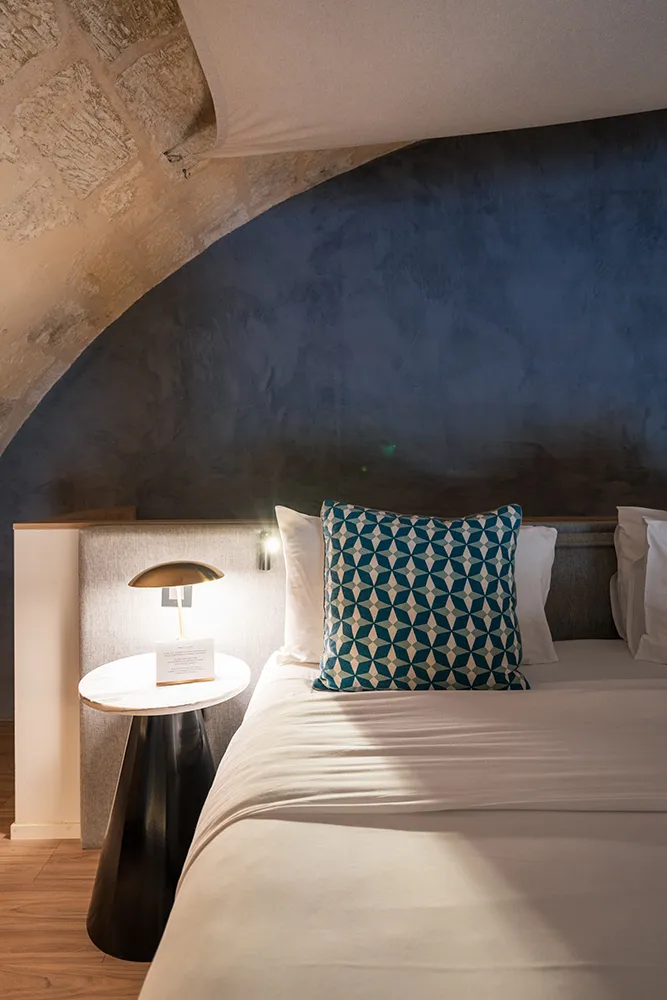
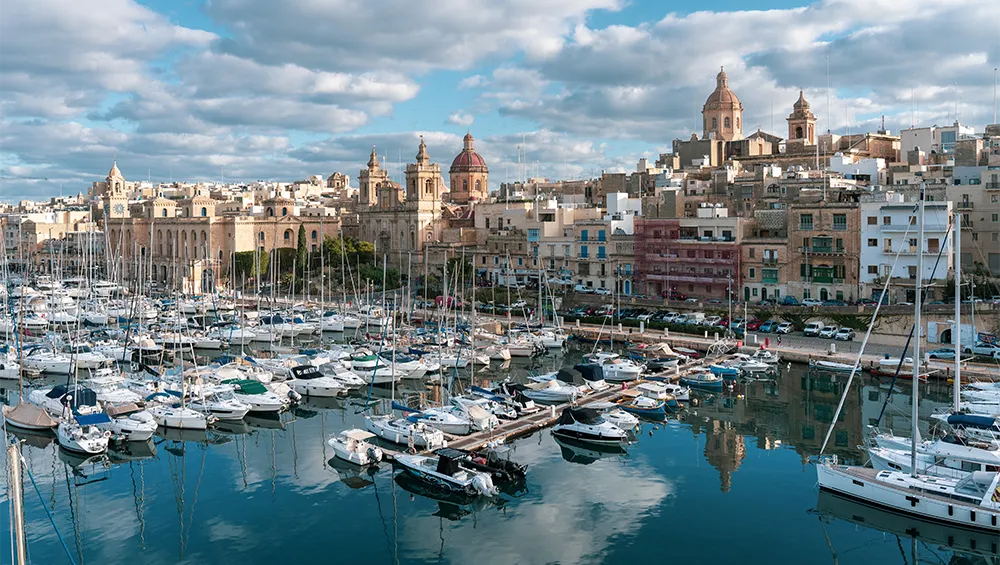
Watch out for the water!
In Malta, running water is not drinkable, so avoid filling your bottles from the tap. Hotels generally provide filtered or bottled water.
Where to eat in Malta ?
There’s no shortage of good restaurants, so here are a few addresses I highly recommend :
On the island of Gozo
Il Baldakkin Gastrobar – €€€€
The Hotel Kempinski’s gourmet restaurant offers refined, local cuisine, giving you the chance to try some typical dishes. The wine list also allows you to sample local produce.


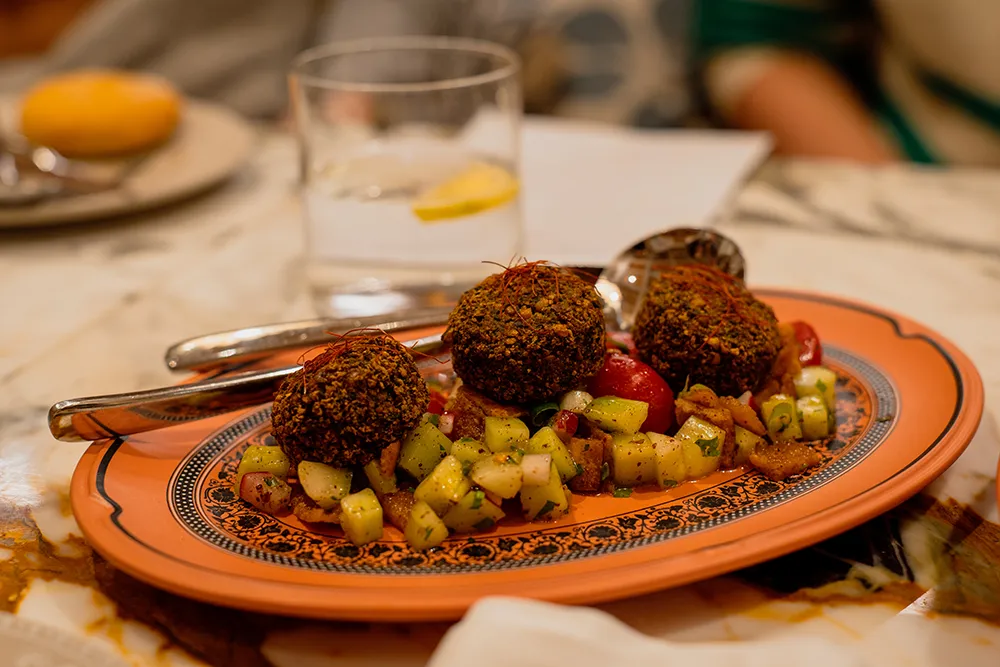

Triq ir-Rokon, San Lawrenz, Malte
www.kempinski.com
+356 2211 0000
Café Jubilee – €€
We’ve fallen in love with this restaurant, which uses local produce at affordable prices. The menu includes pasta, salads and traditional dishes, as well as antipasti to share. You’re sure to find what you’re looking for!
8, Independence Square, Victoria
https://cafejubilee.com/
+356 2155 8921
Organise a picnic or private dinner
Anthony, the chef at Café Jubilee, also organises private picnics and dinners on request. A unique opportunity to discover an olive grove, taste typical Maltese dishes and, of course, talk to the chef to discover the secrets of Maltese cuisine. Contact the restaurant to organise this experience.


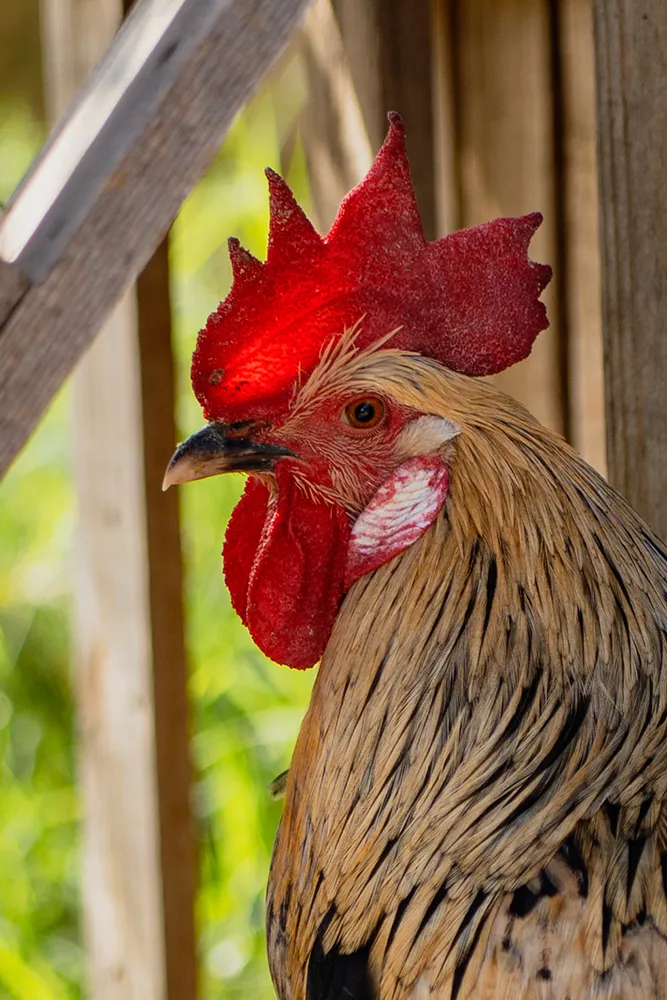
Maldonado Bistro – €€€
In the town of Victoria, a stone’s throw from the Citadel, this restaurant welcomes you in a warm atmosphere. Hearty, gourmet and refined dishes are on the menu, and I particularly liked the rabbit ravioli, a fine blend of Maltese and Italian cuisine.


18 Mons. Luigi, Mons Vella, Ir-Rabat Għawdex, Malte
www.maldonado.com.mt
+356 2701 9270
In Valetta
Café Jubilee – €€
This is the same team as Café Jubilee in Gozo, you can go there with your eyes closed but your taste buds wide open !!!
125, St Lucia Street, Valletta
https://cafejubilee.com/
+356 2704 2332
Rampila – €€€
In the historic centre of Valletta, the Rampila restaurant welcomes you in a magnificent vaulted room. On the menu are typical Maltese dishes (rabbit, octopus, goat’s cheese dishes, etc.) in a warm atmosphere. The restaurant also boasts a fine wine list.


St. John Cavalier, Ordnance St, Valletta
www.rampila.com
+356 2122 6625
The Little Bastion – €€€€
Head to Little Bastion, the restaurant of the Hotel Cugo Gran Macina. In a cosy atmosphere, this gourmet establishment serves refined, tasty Mediterranean dishes made from local produce. It’s also an excellent address for gourmet breakfasts.



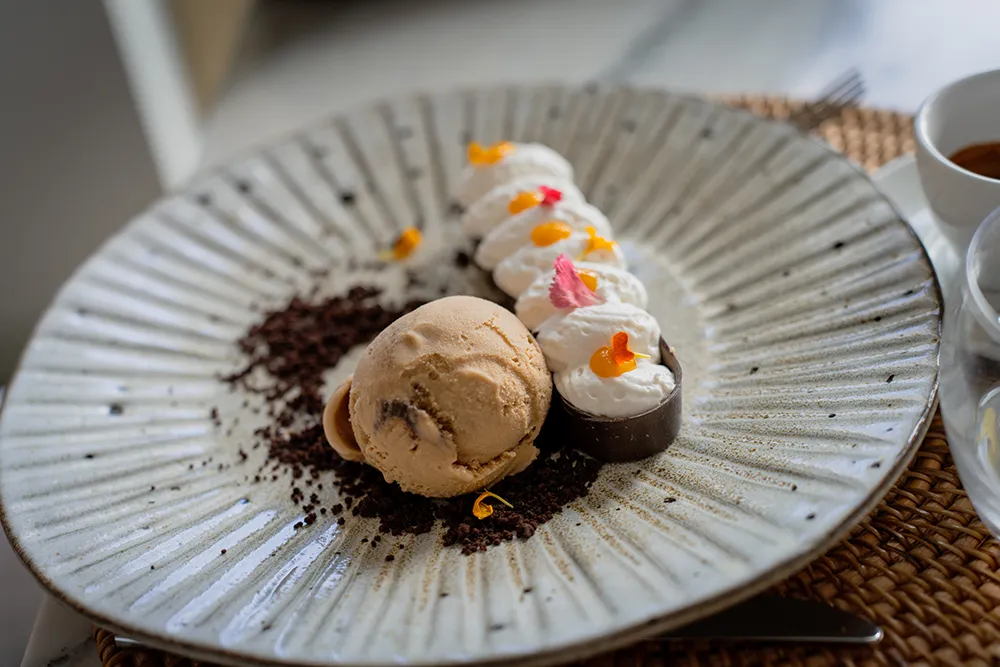
There is also a terrace to enjoy the outdoors on Malta’s many sunny days.
Triq Il-31 ta’ Marzu, Xatt Juan B. Azopardo, L-Isla
cugogranmacina.com
+356 2711 2711
Malta interactive map
Find all the addresses mentioned in this article on this map :
Tip : use the menu on the right to select the type of address you are interested in (accommodation, restaurants, places to visit…).
Small English – Maltese dictionary
Here are a few words in Maltese to help you talk to the locals:
Hello = Bonġu (Bo’ndjou)
Thank you = grazzi (Gratsi)
How are you = Kif inti (Kif i’nti)
Fine = Tajjeb/tajba (Tayèp/tayba)
Goodbye = Saħħa (SaHHa)
How much does it cost? = Dan kemm hu ? (Da’n kèmm ou)
How? = Kif (Kif)
Please = Jekk joghgbok (Yèk yodjbok)
Sorry = skuzi (Skouzi)
Yes = iva (Iva)
No = le (Lè)
Happy travels to Malta !
Article produced following an invitation from Visit Malta and Transavia. However, I am completely free to express my opinion, so the opinions and suggestions for activities mentioned in this article are entirely sincere.
All photographs illustrating this article are the property of Culturez-vous and may not be reused without written permission.

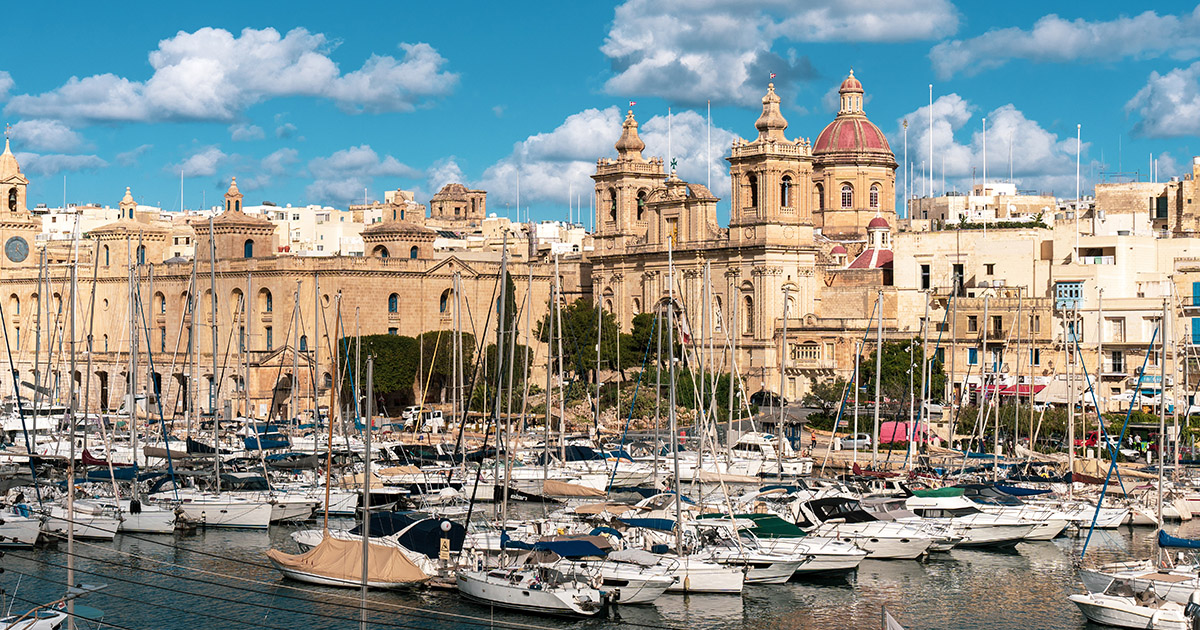



No Comments
Leave a comment Cancel